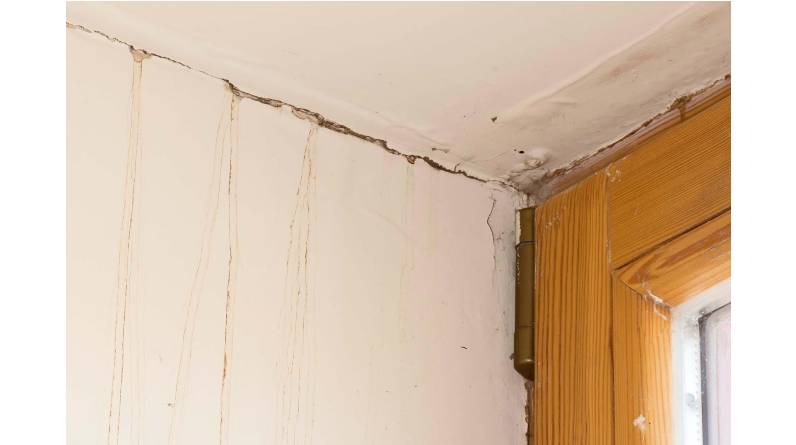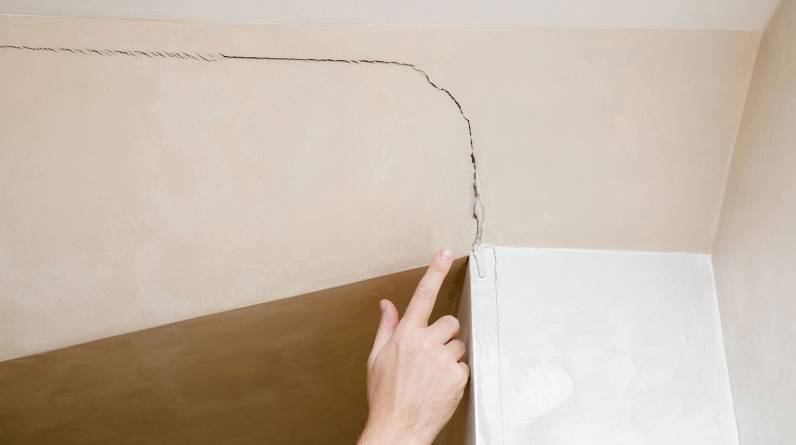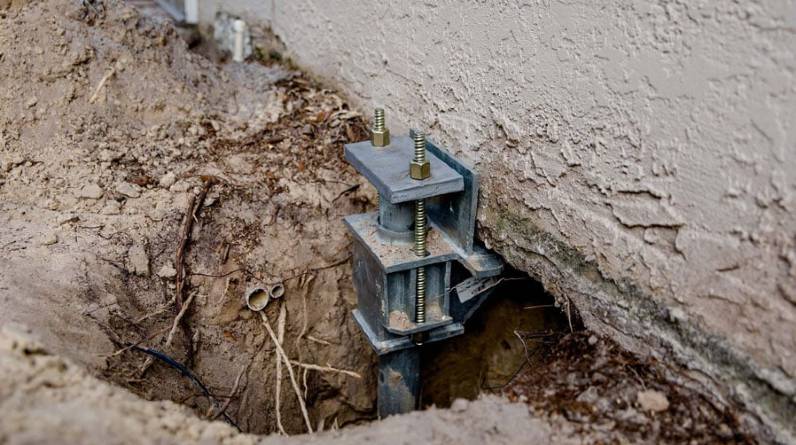
Heave damage, also known as frost heave, can cause an awful-looking mess of your foundation, sidewalk, or driveway if left unchecked. Don’t let heave-damage sneak up on you unawares. Not only is concrete heaving ugly, but it can also be the culprit of legal disputes when someone trips or falls.
What is Concrete Heaving?
For starters, it’s essential to identify what concrete heaving is exactly. There is a difference between concrete heaving and concrete settlement. If the ground underneath the concrete acts as a sponge and swells, a noticeable bulge will appear on the slab’s surface. Often, this phenomenon happens when the soil freezes, expands, and as it heaves it pushes the slab upward, causing the surface of the concrete to protrude. To make matters worse, when the soil dries, the concrete then settles in a downward motion. The result is often that the middle of the concrete looks higher than the edges. Then, unsightly cracks often form in the concrete.
- Heave vs Settlement – Settling concrete moves in one direction, downward. When concrete heaves, it moves upward.
- Settling concrete – (without heaving) often takes place in slabs poured without adequate compaction beforehand. When pockets of air remain beneath the structure, the concrete’s weight gradually flattens them, leading to soil sinking and consequent settling across the slab.
Concrete heaving does not always occur in sidewalks and driveways where you can visibly see it. Sometimes, it happens under a home’s foundation. So, how can heave–damage be perceived if you can’t see it? The answer is that you look for signs of foundation damage. If you notice any of the following, beware! You may have foundation damage caused by heaving:
- Doors and windows sticking
- Uneven floors
- Stair step cracks in brick or masonry
- Cracks in walls, floors, and ceilings
- Separation of ceilings and floors from the walls

What Are Some Causes of Concrete Heaving?
Precipitation. Heavy rain or snow melting in large quantities during a short time can inundate the soil. Without proper drainage, the soil can become overwhelmed. If the soil is expansive (i.e., contains a lot of clay), it will expand as it soaks up all this water and then push against the concrete.
Freezing Temperatures. If you’ve ever accidentally left a water bottle in the freezer, you realize what can happen when wet soil freezes. Imagine the forces that can build up underneath your home.
Faulty Plumbing. Leaky pipes can invite thirsty, absorbent soil, leading to soil expansion and concrete heaving.
What Are Some Methods to Prevent Concrete Heaving?
An ounce of prevention is worth more than a pound of cure. It’s better to eliminate a problem proactively than to try to cope with the aftermath reactively. By thinking ahead, you’ll save money, time, and effort.
Keep in mind that for frost heave to happen, three elements must be present:
- Freezing temperatures
- Water
- Soil
Since we can’t control the temperature or how much it rains or snows, we must focus on the water in our control and landscaping measures.
Proper Grading. Proper grading significantly influences water flow across your property. The ground surrounding your house should incline away from the foundation to prevent water from flowing towards it.
Proper Drainage. Install a drain tile system. This system involves keeping the ground dry around your home’s foundation by gathering and diverting water away from the foundation. Maintaining dry soil is critical, as the majority of foundation issues arise from water accumulation within the soil that is unable to drain away correctly.
Use Downspout Extensions. Place extensions at the end of downspouts to divert water at least 4 feet away from the home’s foundation before release.
Clean Gutters Regularly. Keep gutters clean to prevent rainwater from spilling over the side of the house and soaking the ground around the foundation.
Proper Landscaping. Plant trees and shrubs away from your home. The water they need to stay alive could harm your foundation.
What Methods of Repair Are Available For Concrete Heaving?
Foundation underpinning: When a house’s foundation is severely damaged and unable to support itself, foundation underpinning becomes necessary as a foundation repair technique (the process is used for other reasons as well). Underpinning reinforces the foundation by extending it to load-bearing soil. Underpinning is quick, minimally invasive, and produces immediate results.
There are two types of foundation underpinning: helical piers and push piers. The pier systems are capable of both supporting and elevating foundation slabs.
- Helical Piers. Helical piers are corkscrew-like and are inserted into the ground until reaching the specified load capacity. Spaced at predetermined intervals, they distribute the structure’s weight. When used in foundation repairs, brackets are affixed to the base of foundation walls, transferring weight to the pier.
- Push Piers. Push piers are driven into the ground and, like helical piers, extend the home’s foundation down to load-bearing soil. Once they’re in place, the house can be lifted as much as possible without causing damage.

Polymer injection. Also called polyurethane injection, or polyjacking, it is yet another solution to address heave-damaged foundations. This incorporates a fast-acting, non-destructive polymer to stabilize the soil beneath the foundation, giving it strength and lift.
Based on a soil density test, experienced technicians establish an injection grid to pinpoint specific locations under the damaged foundation for polymer placement. Small holes are drilled into the slab according to the grid, with tubing inserted into each hole at varying lengths, depending on established injection depths.
The two-part polymer is mixed directly at the injection nozzle connected to the tubing. When the compound combines, a potent chemical reaction occurs. As the expansive foaming action flows into the soil, it almost immediately solidifies, thus filling the areas where reinforcement is most needed.
Contact Us Today
If you think your foundation might have damage caused by heaving, contact Epp Foundation Repair today and schedule a free consultation. If we find a problem, we’ll give you a repair estimate.






